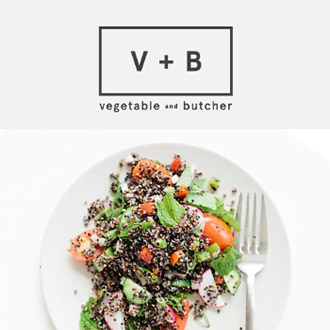If you’re a person, and you live in an a first-world industrialized country, then you’ve probably heard about low-carb diets. (I’m going to go ahead and assume this is everyone currently reading.) Grains, starches, and sugars have all been targeted as the “cause” of increasing obesity, diabetes, and heart disease rates at many points in the past 30 years. And it’s true that as a nutrient, carbohydrates have been consumed in greater amounts since 1970…check out this graph from the CDC. (It’s only for men, but a similar trend occurred in women and can be seen in the link in the previous sentence.)
Basically, this shows that if you look at the percentage of calories coming from each macronutrient (fat, protein, and carbohydrate), fats have declined while carbohydrates have increased from being about 42% to almost 50% of our daily diet. At the same time – and this is also critically important – average intake of total calories went up by 200-300 calories PER DAY. So not only are we eating more calories as carbohydrates, but we’re eating more total calories. (And sitting more, and cooking less, and snacking on junk…but those are topics for other posts…)
Just this week, another report out confirms that “the top sources of energy are grain-based desserts such as cakes, cookies and donuts, and yeast breads” in the same surveys taken as recently as 2008.
These stats have caused a lot of people to make a hasty assumption that if too many carbs are bad, then eating as few as possible must be best. But your brain by itself burns up about 100g of carbs daily, and carbohydrates are important for absorption of other nutrients. The biggest problem with their consumption, in my opinion, is that the quality is low while quantity is high: sugars and refined grains are low quality (don’t have much vitamins, minerals, protein or fiber) and tend to be served in amounts that are ridiculously oversized (think a pasta dish at a restaurant – likely 3-4 servings in a “single” entree!).
Protein and fiber both slow the absorption of carbohydrate, which means your body will be able to prevent your blood sugar from spiking, and using whole grains means that the vitamins and minerals are naturally contained in the flour. The beast bread to choose is one that’s 100% whole grain (the “100%” is important! Lots of breads say “whole grain” but only contain half whole grains as the flour). The recipe below gets an extra boost – “spent grains” from the beer making process are loaded with protein and fiber, while the carbohydrates are largely removed to serve as the “food” for the bacteria which ferment them into alcohol.
So the first thing you need is someone who makes their own beer, or access to some spent grains…alternatively, you can do this recipe with just 100% whole wheat flour, which is how I originally made it, thanks to Holly 🙂 However, this is my friend Will, who makes his own beer. 
It’s a huge process, lots of moving liquids back and forth while keeping things sterile and adding the right elements at the right time. I stick around for conversation, moral support, and to lend a hand when he needs one, but it’s basically a 4-hour hang out. And at the end, he gives me these:

Which you can make into this:
 …with the below recipe. No white flour, processed sugar, or preservatives in sight…just keep it in the fridge in an airtight bag after it’s cool so it will last. Savor one piece at a time – it’s definitely high quality, so watch the quantity!
…with the below recipe. No white flour, processed sugar, or preservatives in sight…just keep it in the fridge in an airtight bag after it’s cool so it will last. Savor one piece at a time – it’s definitely high quality, so watch the quantity!
Ingredients:
- 1 1/2 cups lukewarm milk
- 1 1/2 cups lukewarm water
- 1 1/2 tablespoons yeast (two packets)
- 2 teaspoons salt
- 1/4 cup honey
- 5 tablespoons vegetable oil (neutral flavor)
- 5 cups whole wheat flour
- 3 cups wet spent grains (OR 2 additional cups whole wheat flour)
Directions:
Mix the yeast, honey, and milk. Allow to sit for 10 minutes, until it “blooms” (see picture below.) Add salt, oil, and water to the bowl and blend gently. Stir in spent grains. Mix in the flour one cup at a time, until dough is tacky but able to be handled. Allow to rest at room temperature until dough rises and collapses (or flattens on top); approximately 2 to 3 hours. Punch it down, then split into two large loaves and place in greased pans. Alllow to rise again for 1.5 hours. (Alternatively, you can store it at this stage in an airtight bag in the fridge for the next 5 days.) Twenty minutes before baking time, preheat the oven to 350F, then bake for 50 to 60 minutes, or until deeply browned and firm. Allow to cool completely before slicing in order to cut reasonable sandwich slices.
If you baked all the bread you ate, how much less would you eat, and how much more would you savor it?
By posting this recipe I am entering a recipe contest sponsored by National Honey Board and am eligible to win prizes associated with the contest. I received a gift card to offset the expense of my ingredients.


















Love me some homemade bread and am fascinated those wet spent grains. I can only imagine how great that smelled while it was baking!
YES! The grains give the bread a nutty aroma and flavor, and it’s so hearty that just a slice is very filling 🙂